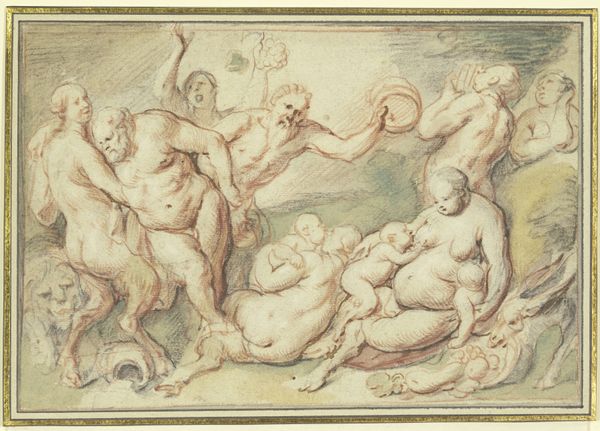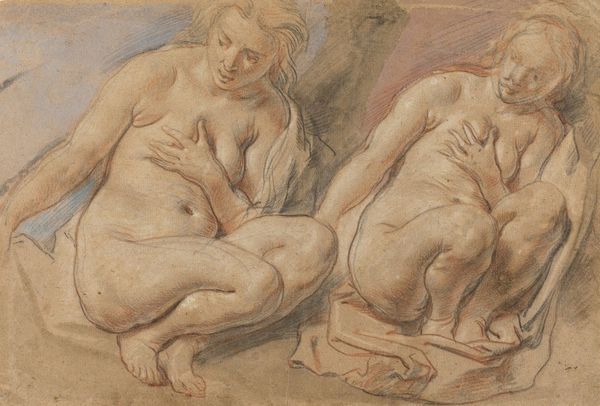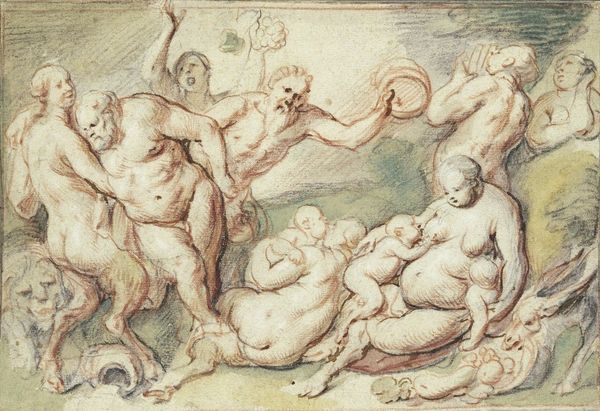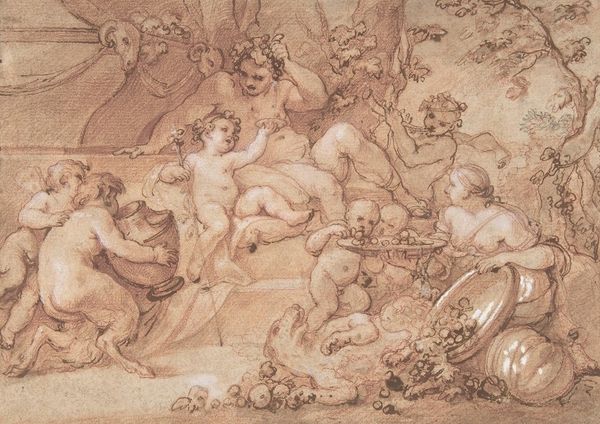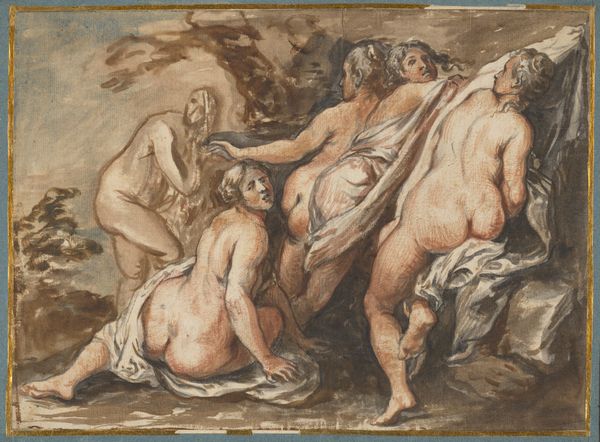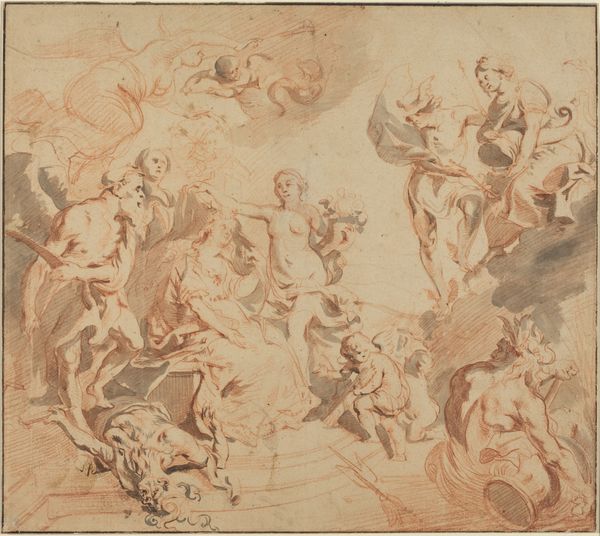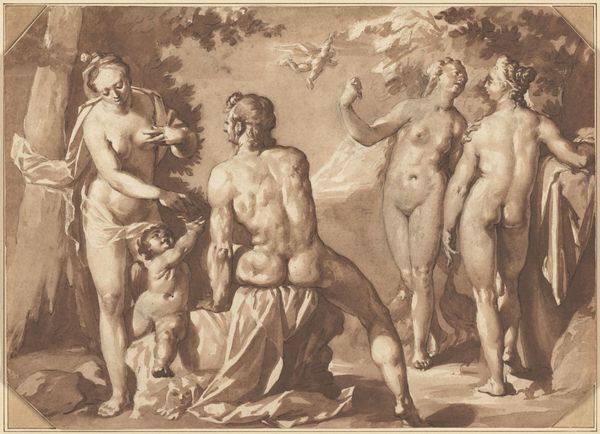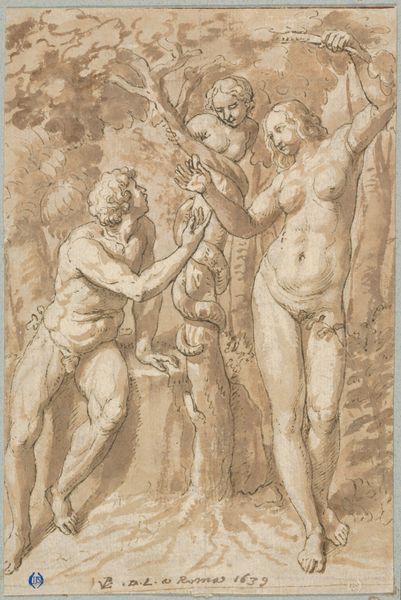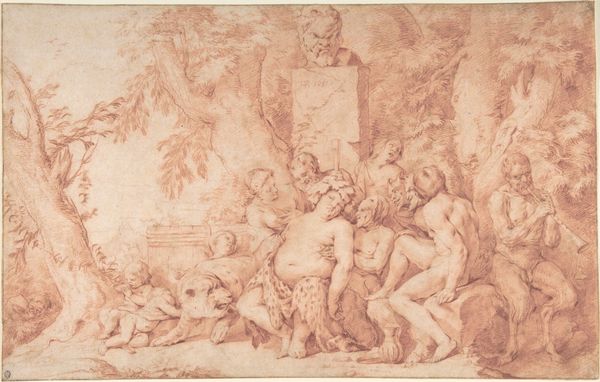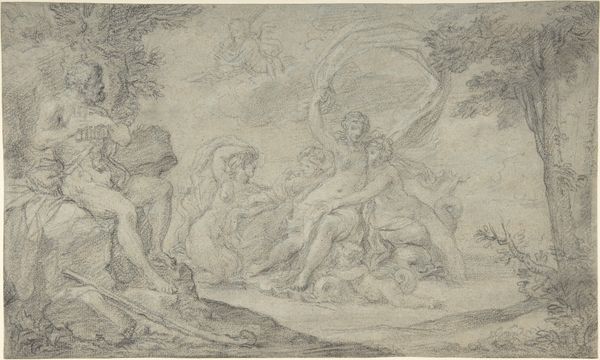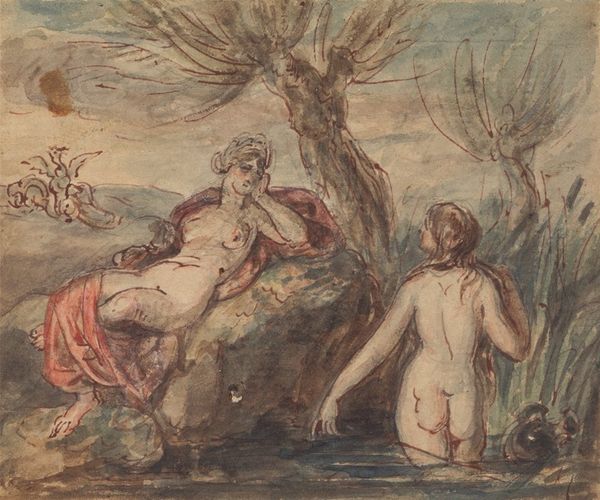
drawing, paper, ink
#
drawing
#
allegory
#
figuration
#
paper
#
ink
#
nude
#
rococo
Copyright: Public Domain: Artvee
Curator: Oh, this drawing immediately gives me a feeling of lightness and airiness. The pale washes of color, the way the figures seem to float… Editor: This is "Venus met Amor en putti," a drawing in ink and paper attributed to Charles-Joseph Natoire. The work is estimated to have been made sometime between 1710 and 1777, situated firmly in the Rococo. style. We see Venus surrounded by cherubic figures – amorini – and putti. Let's dig deeper, though: How do you think this speaks to our present understanding of gender, particularly in light of Venus's prominent nude form? Curator: The sinuous lines definitely highlight a feminine ideal of the era. Venus’ body is not necessarily sexualized for a male gaze, though, but shown as part of a heavenly gathering. Editor: Tell me more about that gathering and its implications regarding power and beauty. Who gets access? Curator: It definitely emphasizes the exclusivity associated with idealized beauty and the divine right to it, an echo chamber that excludes those who fall outside these imposed perimeters. Moreover, how is that power dynamics shaped by both classicism and gender constructs in Natoire's artistic strategy? I would also argue, given that era, race plays a crucial role... Editor: Interesting. For me, though, what’s remarkable is the dynamism Natoire achieves. Observe the spiral composition—Venus is central, reclining, yes, but notice the putti, how their arrangement compels the eye to circle. There's movement within the stillness. Also, let's discuss his employment of ink wash... It almost gives the drawing a fresco-like feeling. How does this choice play into the larger themes? Curator: I think the fresco-like feel elevates what might have just been perceived as sensual in previous traditions to something divinely sanctioned—sanitized, even. In a time when aristocratic decadence started getting critiqued, it gave a touch of traditional legitimation to what the work displays. Editor: It’s interesting to consider that legitimization of power through the lens of aesthetic choices. These angels floating there give this art its allure as an exclusive, classist ideal. It speaks about a legacy of discrimination rooted deeply in the construction of social order. Well, whether through formalism or social critique, one can engage with such historical work. Curator: I believe it allows us to see historical depictions are far from neutral; they interact actively with sociopolitical norms.
Comments
No comments
Be the first to comment and join the conversation on the ultimate creative platform.
